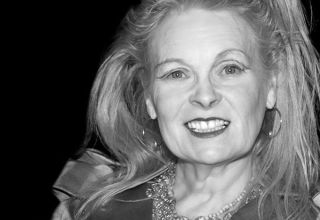Homosexuality and science: the good, the bad, and the ugly
By Jacklin Kwan

From the Kama Sutra to Sappho’s lesbian love poems, homosexual behaviour has been recorded across a diversity of cultures for thousands of years. The evolution of social attitudes towards homosexuality have been continuously sculpted by our understanding of its causes and manifestations. Along with dynamic ethical, religious, and social considerations, we see that science, far from being an objective and apolitical study, has been crucial in reflecting and changing cultural attitudes.
In the 18th and 19th century, there was a growing belief that the scientific method could provide answers to long-standing questions. One such question was the nature of homosexuality, which became an increasingly policed issue with the rise of big industrial centers. One of the first essayists in the West that attempted to explain homosexuality was Karl Ulrichs, a pioneer of the modern gay rights movement. His argument, that homosexuality was a natural biological variation (and that therefore it should not be criminalised), evolved to be the crux of future scientific investigation.
Quite abruptly, homosexuality became a huge point of study in medicine, biology, and the budding field of psychology. There were polarised views as to how homosexuality should be framed. Some psychiatrists, such as Albert Moll, studied homosexuality with the underlying assumption that it was similar to a pathogen – an ‘illness’ that caused people to deviate from a healthy heterosexual default.
Doctors like Moll believed that non-heterosexual inclinations were due to developmental errors that occurred in puberty or childhood. Children would be born with “undifferentiated” sexualities or as blank slates, and would later develop into adulthood as heterosexuals. Those who didn’t were stuck in a child-like state. Therefore, therapy or medical intervention could help homosexual adults “move on” (a frighteningly similar conclusion to much of modern conversion therapy).
Other psychiatrists such as Sigmund Freud refused to make distinctions between socially acquired traits and inherited ones. Freud himself disapproved of singling out homosexuals from the rest of society as his theories of the unconscious meant that all people could potentially express homosexual behaviours at some point in their lives. However, the psychiatric model began to dominate how ‘sexual problems’ were treated. Treatments focused on resolving the ‘mental conflict’ that prevented people from actualising a heterosexual state, leading to the traumatic abuse and isolation of LGBTQ+ people in asylums.
The most powerful challenges to this worldview came when many biological studies documented the ubiquity of homosexual behaviour in animals and in human beings. Notable scientists like Alfred Kinsey showed how common homosexual experiences were, and developed models that introduced sexuality as a scale or a spectrum rather than rigid categories. Psychologist Evelyn Hooker also pushed back against the classification of homosexuality as a mental disorder. She showed that there was very little quantitative correlation between mental illness and sexuality. Soon, there was a slow naturalisation of the LGBTQ+ identity. The push for LGBTQ+ equality was bolstered by new scientific thought that destigmatised homosexuality.
Currently, scientific study into the nature of LGBTQ+ variations continues. There is increasing interest in how prenatal hormones and genes affect sexuality. In a way, science today reflects the idea that we are “born” with our qualities. Though it is a far cry from the prejudiced undertones in science during the 19th century, current science may still be highly restrictive. Genome mapping and the study of maternal environments can fail to account for complexities. Often people experience attractions that vary across time and context – a dynamism that is lost by understanding sexuality as a purely inherited trait.
The history of research into homosexuality shows the difficulty in challenging entrenched social beliefs. Science can be a tool for oppression when researchers fail to critically evaluate their invisible assumptions. But in its best form, science can liberate us from the prison of our prejudice.







